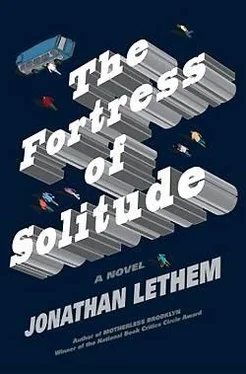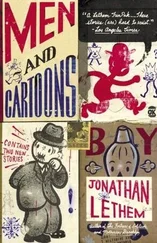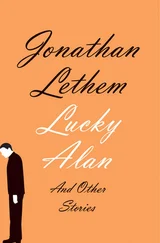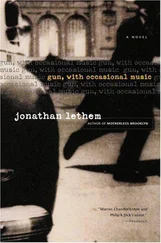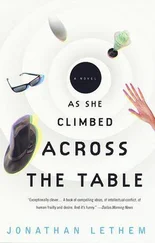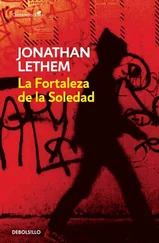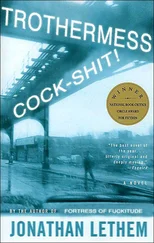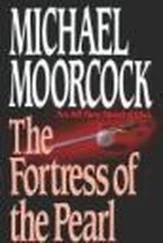Ghetto? Is that the name for it? Depends which block in this patchwork you have in mind. Rise up, the way the flying man no longer can. Look. Here Fourth Avenue’s a wide trench of light-industrial ruin, oil-stained auto-body shops and forlorn, graffitied warehouses, sidewalks marked with sprays of broken glass which trace the shape of nighttime incidents in front of Chinese take-out places, liquor stores, bodegas, all of them serving their customers through slots or sliding drawers in shields of Plexiglas. At the opposite end, Court Street’s an old Italian preserve, the side streets south of Carroll hushed in the grip of Mafia whispers, old ways enforced with baseball bats and slashed tires, down to where the looming, curling Brooklyn-Queens Expressway forms a steel curtain severing what used to be Red Hook. South, the Gowanus Canal is a wasteland of buried or sunk toxins and smoldering strips of rubber, while Ulano, the solvent factory, is a block-long engine, its windows like slit eyes, pumping out fresh invisible toxins and accompanying legends of nerve damage and brain tumors. The projects, Wyckoff Gardens and Gowanus Houses-well, they’re projects, their own law, like meteors of crime landed in the city’s midst, still unapproachably hot. The jail’s called a House of Detention, a thin euphemism nonetheless worth clinging to. So, the brownstone streets which span these margins- Wyckoff, Bergen, Dean, Pacific-a ghetto?
Call it “The City’s Best-Kept Secret.”
Nevins has unique properties, venting at the top to Flatbush Avenue and running south smack into the Wyckoff Gardens, on the way threading the halfway house, the Department of Motor Vehicles, Schermerhorn Park, and the Nevins Day Care Center, on the steps of which drunks gather to greet welfare moms as they pass in and out of the center, yanking bawling kids’ arms like yo-yo strings. And widely known but rarely spoken of is this: Pacific Street at Nevins is a place where prostitution’s tolerated. Some default in authority has chased it to this corner, where after eleven o’clock a lone streetwalker or sometimes a pair can be spotted in the shadow of Public School 38, heard cooing enticements to lone strollers on a quiet night. Outraged calls to local officials gain promises and nothing more. At that inexplicable level where such civic deals are struck this one’s irrevocable, even as the neighborhood on all sides is gentrifying fast. So the police are revealed as skeptics, insensible to the concerns of realtors. This zone’s on their official map-never displayed to the public-of Hopeless.
So, perhaps it’s by this same principle that the no-longer-flying man has been allowed to rest undisturbed for weeks in his fetal curl on the corner of Nevins and Atlantic. He’s still there the last Saturday of March, when the black kid and the white kid go by. Yes, they’re together again, that uncanny sporadic pair, their solidarity a befuddlement to passersby, a shred perhaps of utopian symbolism, sure, something Norman Rockwell might have chosen as a subject, but not outweighing the fact that the two look furtive, maybe stoned, unmistakably headed for if not already deep into all kinds of black-white-combo trouble. Even those who don’t happen to spot them slipping blunt felt-tipped markers sopped with purple ink in and out of their jackets sense the likelihood that something’s not right. This is Brooklyn, nothing integrates innocently. Who’s fooling who? If the cops were on the ball they’d likely split up this pair just on general principles.
The white kid and the black kid take turns playing lookout while the other tags up. Things are radically simplified: the white kid’s stopped looking for his own moniker, been encouraged by the black kid to throw up his perfect replication of the black kid’s tag instead. DOSE, DOSE, DOSE. It’s a happy solution for both. The black kid gets to see his tag spread farther, in search of bragging points for ubiquity, that bottom-line standard for a graffiti writer’s success. The King of the C Line, for instance, is just a lousy tagger with too much time on his hands who’s thrown up the unimaginative tag CE on every window of every car of the trains that run that line. A success of this type is as impossible to dispute as it is mechanical, crude. Graffiti writers compete like viruses, by raw proliferation.
What’s in it for the white kid? Well, he’s been allowed to merge his identity in this way with the black kid’s, to lose his funkymusicwhiteboy geekdom in the illusion that he and his friend Mingus Rude are both Dose, no more and no less. A team, a united front, a brand name, an idea. The white kid’s control of line, honed in a thousand Spirograph spirals, and his gift for mimicry-Can You Draw Tippy?-both have served him well. His rendition of the DOSE icon is clarified, perfected, automatic-in fact cleaner and more sure in its lines than the black kid’s. Just a trick of the hand, nothing anyone couldn’t learn if they practiced it a gazillion times waiting for this moment.
The marker’s in the black kid’s hands now. The white kid’s the lookout. The black kid puts DOSE on the base of the traffic light at the corner of Atlantic and Nevins, and on the locked-up locksmith’s rolling metal gate. Then he turns and considers the curled figure near the curb. They both consider the figure. The bum-the word they’d find if they bothered to find a word-has been sleeping or dead on this corner for long enough now that they’ve both noticed him at different times. This is the first time together, though, and being together forces them to acknowledge the figure in a way they wouldn’t apart.
The white kid has one set of feelings, the black kid another. The white kid’s seen this particular bum on better days, seen him in the sky , idiotic as that sounds. He’s got no idea whether his friend Mingus has this information, and no idea where he’d begin explaining it if he wanted to try. He’s just locked into a permanent state of stupid wonder here, along with a slug of fear.
The black kid’s curling his lip, suffering a ripple of sudden shame: of course it’s a black guy who’d be lying here in the street, goes without saying. Not a Latin guy. No matter how many Hispanic drunkards might spill out of Dean Street ’s rooming houses, they always wobble home, sleep in beds, change clothes, cash government checks, and begin again. And he’s no white guy, no need to even think about it.
“Watch this,” said the black kid.
“What?” says the white kid.
The black kid dashes forward with splendid daring, taking the white kid’s breath away. He’s got the marker uncapped. The plasticky sleeping bag stretched across the bum’s back has a sheen despite the grime, a slickness to welcome the marker’s slide. The black kid kneels at the stinky form and tags up, managing despite the drag of the felt on the blackened synthetic: in a moment the thing is done and they both spring away, amazed.
The bum’s back reads DOSE.
“Run!”
“He’s not moving. Ho, shit! Look at that!”
“Come on!”
That’s it, they’re done tagging for the day, nothing could top this anyway. The two of them scramble down Nevins, gasping with laughter, drunk on the atrocious prank, on the demonstration of their dangerous new ability to reach out and plop a logo on the maybe-dead of this world.
They arrived late and had to take single seats a distance apart. Dylan sat near the front, in the second row. His father had insisted Dylan take the nearer seat, had himself taken one farther back and at the far left side of the lecture hall. Dylan understood he was meant to appreciate this up-close glimpse of the experimental filmmaker Stan Brakhage, whom Abraham regarded soberly as a great man, a beautiful man . The topic, generally, was paint on film. Dylan hadn’t known before this moment that painted film existed, apart from Abraham’s. Let alone that the topic could draw a crowd to fill a hall full of uncomfortable metal folding chairs.
Читать дальше
